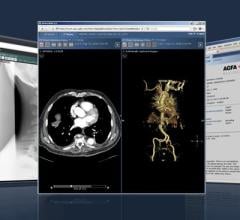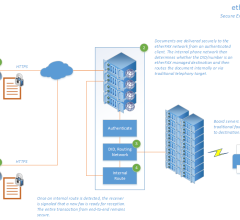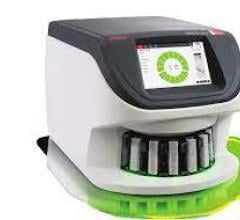September 29, 2009 - Abnormal results on outpatient imaging tests sometimes may not receive timely follow-up even when clinicians receive and read results in an advanced, integrated electronic medical record system, according to a report in the September 28 issue of Archives of Internal Medicine, one of the JAMA/Archives journals.
Although "communication breakdown is consistently identified as a preventable factor" it is "a significant contributor to outpatient diagnostic errors from a lack of follow-up of abnormal test results," the report said. The high volume and number of transitions between clinicians in outpatient care makes timely communication particularly challenging. For instance, a primary care physician may refer a patient with respiratory symptoms to undergo several laboratory and imaging tests and a pulmonary consultation. Any abnormal findings, such as a lung mass, would need to be communicated quickly and effectively to all clinicians involved in treating the patient.
Hardeep Singh, M.D., M.P.H., of Michael E. DeBakey Veterans Affairs Medical Center and Baylor College of Medicine, Houston, studied critical imaging alert notifications in the outpatient setting of one Department of Veterans Affairs facility between November 2007 and June 2008. The researchers used tracking software to determine whether alerts about abnormal test results were read within two weeks, then reviewed medical records and contacted health care practitioners to determine whether timely follow-up actions (such as ordering a follow-up test or consultation) were taken within four weeks of the alert transmission.
Of 123,638 imaging tests (including X-rays, computed tomographic [CT] scans, magnetic resonance imaging [MRI] and mammograms) performed during the study period, results from 1,196 (0.97 percent) generated alerts to the ordering clinician. Of these alerts, 217 (18.1 percent) were not acknowledged. Alerts were more likely to be unacknowledged if the ordering clinician was a trainee or if an alert was sent to more than one clinician (for example, when the ordering clinician was not the patient's primary care physician, and alerts were sent to both the specialist and the patient's regular physician).
Timely follow-up of abnormal results did not occur following 92 (7.7 percent) of all alerts, including 7.3 percent of alerts that were acknowledged and 9.7 percent of alerts that were unacknowledged. This follow-up was also less likely to occur when more than one clinician received the alert, but more likely to occur when a radiologist also communicated concerns about the results verbally, either by phone or in person. "Nearly all abnormal test results lacking timely follow-up at four weeks were eventually found to have measurable clinical impact in terms of further diagnostic testing or treatment," noted the authors.
The findings suggest that an electronic medical record that facilitates transmission and availability of critical imaging results to the healthcare provider through either automated notification or direct access of primary report does not eliminate the problem of missed test results even when one or more health care providers read the results. The study's researchers suggests there is a need for a multidisciplinary approach involving human-computer interaction and informatics to complement the benefits achieved by automated notification and the need for continuous monitoring procedures to ensure follow-up even when health care providers acknowledge they have read the results.
Reference: Arch Intern Med. 2009;169[17]:1578-1586.
For more information: archinte.ama-assn.org


 May 16, 2024
May 16, 2024 








